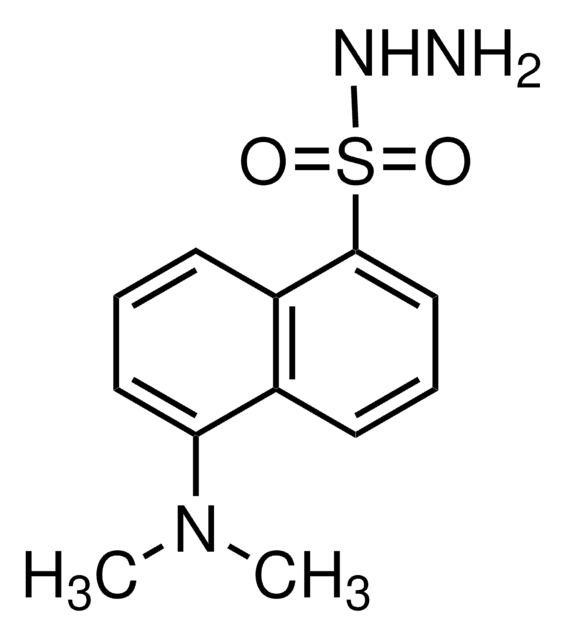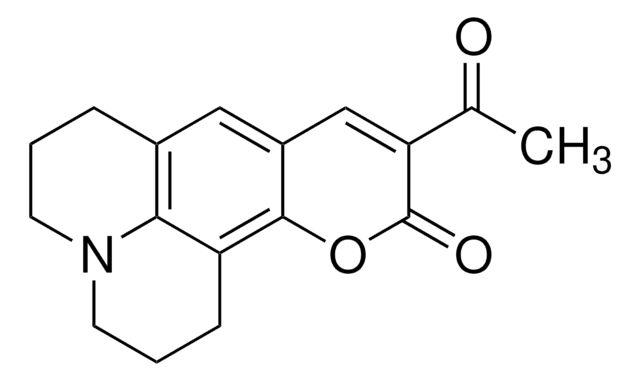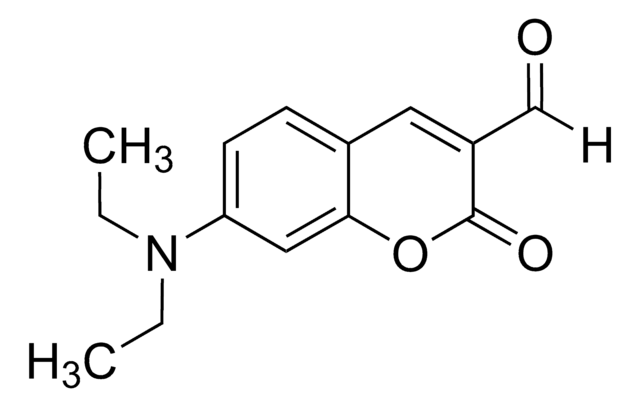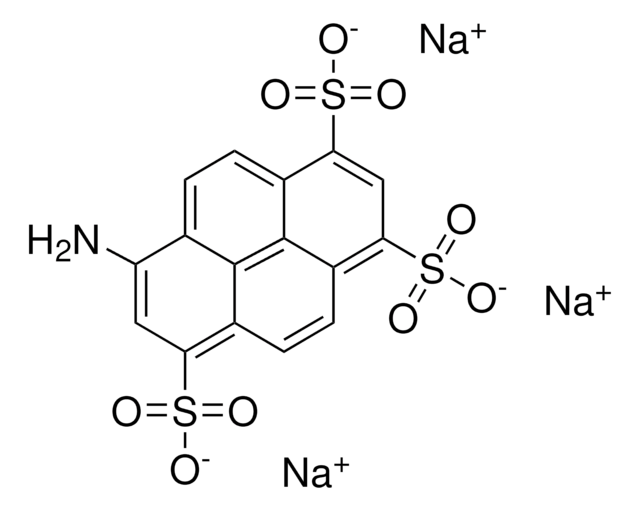36798
7-(Diethylamino)cumarin-3-carbohydrazid
BioReagent, suitable for fluorescence, ≥95% (HPCE)
About This Item
Empfohlene Produkte
Produktlinie
BioReagent
Assay
≥95% (HPCE)
Löslichkeit
DMF: soluble
acetonitrile: soluble
chloroform: soluble
methanol: soluble
Fluoreszenz
λex 450 nm; λem 468 nm in methanol
Eignung
suitable for fluorescence
SMILES String
CCN(CC)c1ccc2C=C(C(=O)NN)C(=O)Oc2c1
InChI
1S/C14H17N3O3/c1-3-17(4-2)10-6-5-9-7-11(13(18)16-15)14(19)20-12(9)8-10/h5-8H,3-4,15H2,1-2H3,(H,16,18)
InChIKey
LYBMHAINSFEHRL-UHFFFAOYSA-N
Allgemeine Beschreibung
Anwendung
Verpackung
Sonstige Hinweise
Signalwort
Warning
H-Sätze
Gefahreneinstufungen
Eye Irrit. 2 - Skin Irrit. 2 - STOT SE 3
Zielorgane
Respiratory system
Lagerklassenschlüssel
11 - Combustible Solids
WGK
WGK 3
Flammpunkt (°F)
Not applicable
Flammpunkt (°C)
Not applicable
Persönliche Schutzausrüstung
dust mask type N95 (US), Eyeshields, Gloves
Analysenzertifikate (COA)
Suchen Sie nach Analysenzertifikate (COA), indem Sie die Lot-/Chargennummer des Produkts eingeben. Lot- und Chargennummern sind auf dem Produktetikett hinter den Wörtern ‘Lot’ oder ‘Batch’ (Lot oder Charge) zu finden.
Besitzen Sie dieses Produkt bereits?
In der Dokumentenbibliothek finden Sie die Dokumentation zu den Produkten, die Sie kürzlich erworben haben.
Kunden haben sich ebenfalls angesehen
Unser Team von Wissenschaftlern verfügt über Erfahrung in allen Forschungsbereichen einschließlich Life Science, Materialwissenschaften, chemischer Synthese, Chromatographie, Analytik und vielen mehr..
Setzen Sie sich mit dem technischen Dienst in Verbindung.
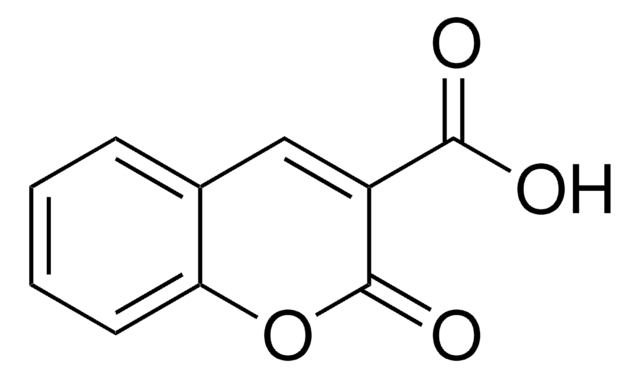
![7-Diethylamino-3-[N-(2-maleimidethyl)carbamoyl]cumarin suitable for fluorescence, BioReagent, ≥97.0% (HPLC)](/deepweb/assets/sigmaaldrich/product/structures/341/038/a7e0c464-8abe-4eb0-b253-6537f649d89c/640/a7e0c464-8abe-4eb0-b253-6537f649d89c.png)

